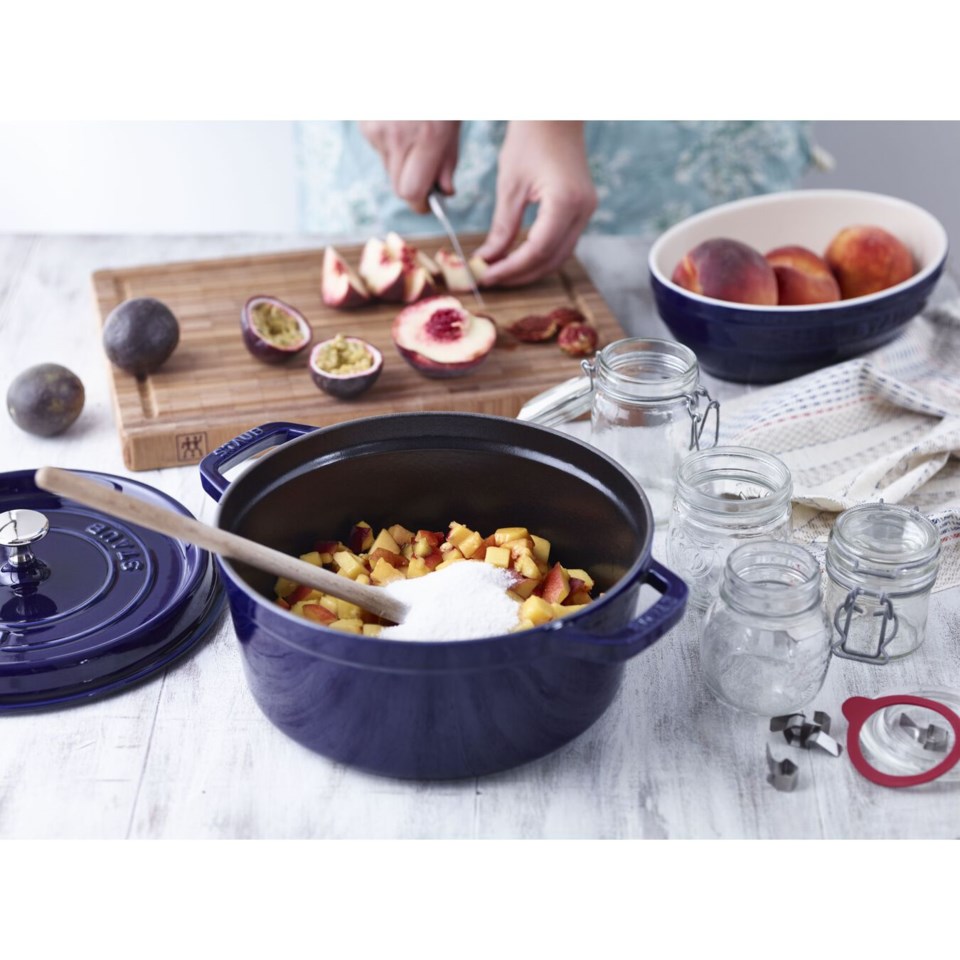Julia House has a knowledge of pans that is downright panoramic, if you'll pardon the pun. The owner of Nanaimo's Maison Cookware + Bakeware doesn't simply sell the stuff. She understands her product inside and out -- why it works, how it works, and what will work best for your needs as a chef.
"I've tried to do that research so that everything in my store, you can buy with the confidence that the cookware or tool actually works," she says. "It's not some gimmicky thing that's going to fall apart after a week or whatever. We work really hard to make sure that our customers are getting the right product for them."
There is simply no way to speak to House about cookware for 15 minutes without begging for a formal recommendation. Blessed to converse with somebody whose knowledge of cookware is so expansive, we had to ask: which pans are you feeling right now?
STAUB COCOTTES

"The first cast iron that I started with in the store was a brand called Staub," House says. "They're made in France."
House pointed to the brand's use of black quartzite, giving Staub Cocotte pans an enameled interior that protects against rusting, staining and crazing -- that network of lines or cracks that often appears in a pan's glazed interior, giving bacteria places to hide.
"One of the other reasons is the benefit of the lid," House says. "If you're doing a braise or something like that and you're cooking with your lid on, the design of the Staub lid has these little spikes all over it, or if it's a domed lid, it has something called the chistera swoop. What that does is it captures any humidity and moisture that condenses on the lid and it rains that moisture back down over the entire dish, like a showerhead keeping your food more moist."
SMITHEY PANS AND SKILLETS

"I'm absolutely in love with my Smithey pan," House says. "The cast iron is raw cast iron, so it does require seasoning to protect the iron from rusting. What you're also doing when you season a raw cast-iron pan is you are creating a natural, nonstick surface of a cooking oil. So it's not a polymer, it's not a poison, it's not anything like that. By creating it out of cooking oils, like canola oil, or grapeseed oil, or something like that, in addition to the natural fats in the foods that you're cooking, which means that you can re-season that pan if you're finding that it's not performing up to snuff."
"I'm making some amazing meals out of my Smithey pan. It does a roast chicken like nothing I've ever done before. I'm doing some casserole bakes. I'm doing eggs. I'm doing pancakes, doing all kinds of things, and I'm absolutely loving the way it performs. It is beautiful."
Asked to explain to an impatient chef what's so great about cast iron cookware, House didn't hesitate.
"If you're doing outdoor cooking specifically, or cooking that you want to do over a campfire or on your barbecue or things like that, cast iron really is king," House says, "and the biggest reason is that it is a fairly non-responsive metal to use when cooking. What that means is that it takes a while to heat up, but it hangs onto that heat for a really long time."

If a gust of wind sweeps through your campsite, a cast-iron skillet will still be hot afterward. That's crucial to understand—you never want to interrupt the cooking process.
To browse the selection and learn more about Maison Cookware + Bakeware, visit the website at www.maisoncookware.com.



